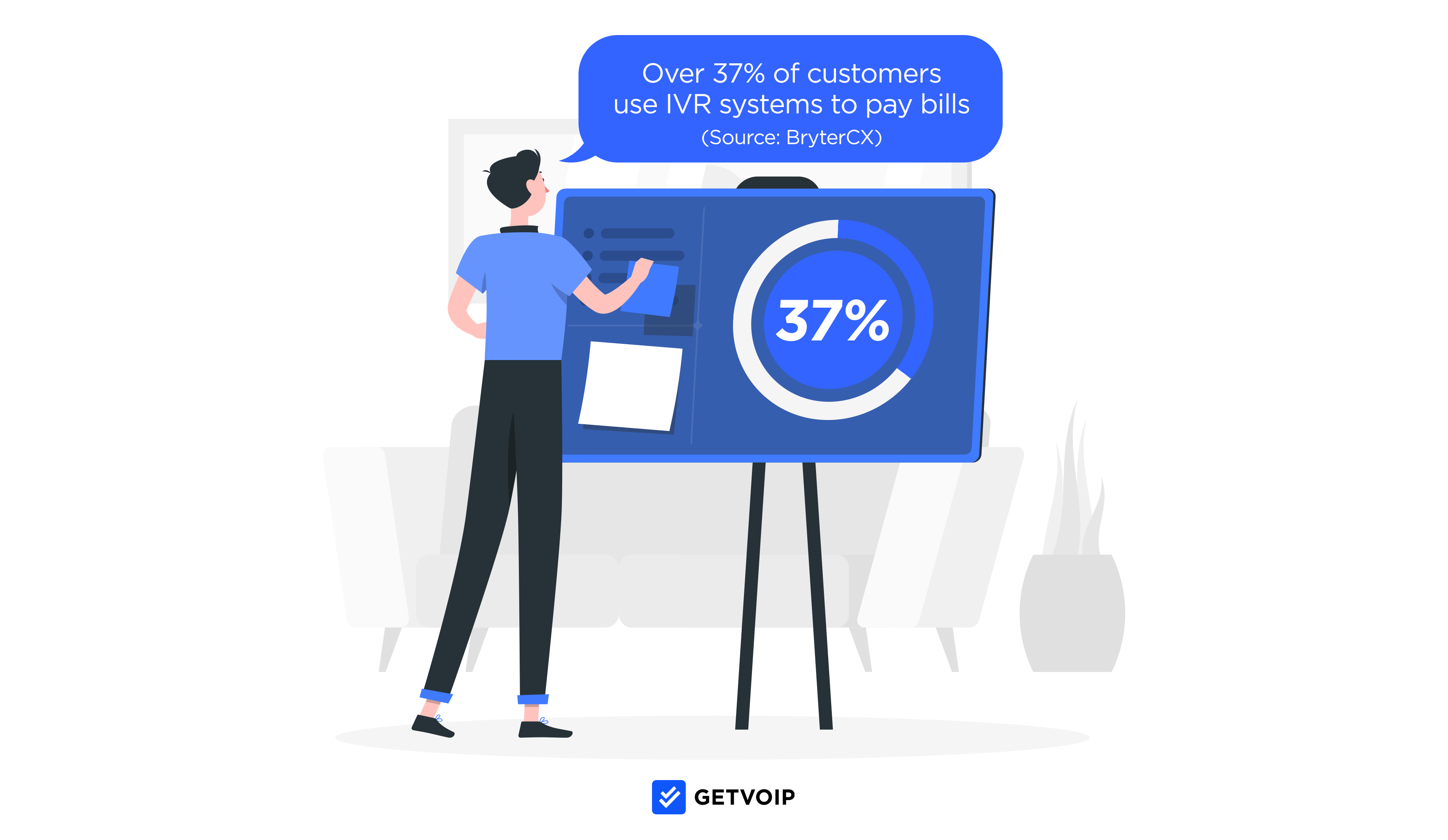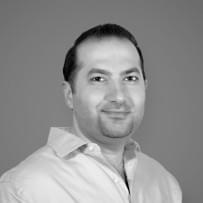The difference between IVR and IVA is that IVR can only understand a limited number of customer inputs and routes along preset paths, while IVA uses AI and database integrations to provide more dynamic responses and conversations. IVA can understand many more customer inputs and respond with knowledge base articles, bits of information, customer data, and more.
Choosing between IVA vs IVR can be a tough challenge for businesses of any size, but there’s no definitive right answer – which is why many companies use both.
If you’re looking to optimize your workforce, shorten customer wait times, and provide better self-service, this breakdown of IVR vs IVA will give you all the information you need.
Quick links:
- What Is An IVR?
- What Is An IVA?
- IVA vs IVR: Key Differences
- Top IVA Features
- The Benefits of IVA Over IVR
- When To Use IVR
- When To Use IVA
- Should I Upgrade From IVR To IVA?
- IVA vs IVR: FAQs
What Is An IVR?
An IVR (Interactive Voice Response) is an automated VoIP feature that streamlines the business phone system menu navigation process by routing callers to the best available agent according to the caller’s responses to pre-recorded voice prompts and questions.
Callers can answer these prompts by speaking directly into their phones since IVR uses Natural Language Processing (NLP) to understand and respond to requests.

For instance, an IVR might read prompts like, “To speak to sales, say ‘sales’” to connect callers to the appropriate department. IVRs may also include basic self-service prompts like, “Please say your credit card number to hear your account balance.” The idea here is to route customers to the correct department or agent without involving a human receptionist.
NLP recognizes key “trigger” words and phrases in customer responses, like “sales” or “accounting department,” and routes calls accordingly.
Compared to legacy DTMF touch-tone responses, which require callers to respond via touch tones on the dial pad, IVRs are more convenient, shorten customer hold times, and decrease the number of call transfers.
This not only optimizes call queues but also frees up agents, allowing them to focus on resolving tickets and other requests instead of manual call management.
To avoid errors, program your IVR with a diverse set of trigger words and phrases to ensure your system understands a variety of ways to phrase caller requests.
Fortunately, some IVRs have drag-and-drop editors that make programming it a lot easier.
What Is An IVA?
An IVA (Intelligent Virtual Assistant) is an AI-powered assistant that analyzes customer input, provides relevant responses, and automates customer self-service and other business processes.
Also called Intelligent Virtual Agents, IVAs rely heavily on customer data points, using stored caller information like CRM data and order history to provide more personalized, detailed support.

Because most advanced IVAs are multilingual and focused more on creating a “conversation” between the caller and virtual agent, they are better suited to understand accents or slang IVR technology would struggle with.
More well-known conversational AI IVA solutions include Apple Siri, Amazon Alexa, and Google Assistant.
While IVAs have been known to misinterpret input in a spectacular fashion, their Artificial Intelligence machine learning foundation improves response accuracy over time, as these systems build up a database of past conversations.
Contact centers often utilize IVAs to reduce the average handle time and increase first call resolution rates. Often, chatbot messaging tools are implemented alongside IVA to ensure customers receive automated support via both text and voice input.
IVA vs IVR: Key Differences
IVA is a bit like an upgraded version of standard IVR. The below table quickly outlines the key differences between IVA vs IVR.
| IVA | IVR |
| End Goal: Offer customer self-service resolutions without involving a live agent | End Goal: Route callers to the correct live agent |
| Integrates with CRM and analyzes customer history to provide detailed support | Primarily relies on customer input/answers to pre-recorded voice prompts |
| Can handle complex support tickets and advanced customer requests | Can’t handle complex support tickets and customer requests |
| Anti-fraud measures like voice biometrics | Spam caller protection (on certain platforms) |
IVA offers improved speech recognition and has a much higher level of task and call center automation than IVR systems alone. It’s designed to help callers avoid lengthy pre-recorded call menus, assist large-scale call centers to better manage high call volumes, and offer a much more personalized automated system experience.
It also uses machine learning to get “smarter” over time on its own, without requiring as much hands-on configuration from admins to improve call flows and outcomes.
By taking care of repetitive tasks or frequently asked questions, IVAs free up human agents to focus on complex tickets that need one-on-one attention.
Like IVR, IVA offers 24/7/365 customer support.
But IVA, unlike IVR, can resolve more complex issues and manage highly detailed interactions without routing callers to a live agent. Even if the IVA system can’t completely resolve all customer issues, it can still gather key information and create a detailed support ticket that helps team members expedite the customer service solution process.
The advanced speech recognition technology of IVAs can actually verify a caller’s identity through voice biometrics. This makes it possible to access account information over the phone without running the risk of fraudulent callers trying to phish for sensitive details.
Top IVA Features
There are many IVA features that could be beneficial to your company but, in the interest of brevity, let’s take a look at the five most noteworthy ones.
Multilingual Processing
IVAs can interpret input from over a hundred languages through their NLU (Natural Language Understanding) and speech recognition algorithms. This makes it possible for your company to serve a global audience without having to hire additional employees or pay extra for translation software.
Account Verification
As mentioned above, IVAs can use voice biometrics to identify callers. This feature comes in especially handy during security breaches, such as account login attempts or other suspicious account activity.
Sentiment Analysis
Unlike IVRs, which only analyze caller input, IVAs can identify changes in the customer’s tone and mood during the conversation. If it detects that the customer has become frustrated, it automatically routes the call to a human agent to de-escalate the situation.
Intelligent Callback
If your business struggles with long queues and extended wait times, then IVA’s intelligent automated callback feature will be extremely helpful.
Instead of making customers wait on hold until an agent becomes available, the virtual agent can offer a callback option and then stay in the queue in their place until the live agent is ready for the call.
Security and Compliance
IVAs offer PCI-compliant and HIPAA-compliant services, meaning they can securely process payments, collect health information, and gather additional sensitive account data.
As these virtual assistants aren’t human, there’s a much lower risk of privacy and security breaches. Some customers will feel much more comfortable discussing financial and health-related issues with an automated assistant. Plus, IVAs don’t store sensitive information.
The Benefits of IVA Over IVR
Like any business decision, choosing the right path comes down to identifying the benefits of each route and seeing which one would be the ideal fit for your company. Here are three things that IVAs are better at than IVRs.
Improved Customer Satisfaction
IVAs offer a high level of customer self-service combined with a more seamless overall support experience.
These systems collect key caller information and present it to agents before they take the call, and integrate with CRM tools to allow agents to take notes on their conversations. This eliminates the need for customers to constantly repeat their problems to a new agent, transfers them to the best available agent to help them, and increases first call resolution rates.
Plus, their sentiment analysis feature transfers callers to a live agent at the first sign of frustration — not to mention the fact that your customers will also be able to request callbacks! Overall, IVAs increase customer satisfaction far more effectively than an IVR system would.
Decreased Agent Turnover
It’s important to note that IVRs don’t actually reduce the workload of your agents – they just route customers to the right person the first time around, decreasing the number of call transfers.
By contrast, IVAs can independently handle simpler queries on their own, reducing the number of repetitive tickets that your team will need to handle. In making the work less tedious, IVAs will naturally lower your agent turnover as well.
Other factors that improve the work experience for your employees include internal knowledge bases that further cut down on ticket volume and the ability to see customer data before the call instead of going through a question script dozens of times per day.
Decreased Call Abandonment Rates
Since customers can immediately voice their concerns and avoid waiting on hold by selecting the automated callback option, call abandonment rates will decrease when IVAs are implemented. IVRs can only do so much when it comes to reducing queue length or keeping customers from hanging up before they speak to an agent.
When To Use IVR
If your contact center automation needs are mostly related to optimizing call routing strategies and balancing agent workloads, then an IVR system may be sufficient.

IVRs also reduce operating costs as they route, transfer, and forward calls automatically and answer basic support queries. This eliminates the need to hire additional team members.
Beyond efficiency and competitive pricing, some companies also implement an IVR system to increase their perceived authority when interacting with customers. Having an automated menu greeting the caller can make it feel like they’re contacting a much larger and more established company.
IVRs get the job done when it comes to simple tasks and use cases, and it’s almost always a better option than using DTMF menus alone.
When To Use IVA
The majority of companies will get bigger benefits from adding IVA to their call flow as opposed to IVR.
IVAs are especially important for businesses that only operate from Monday to Friday, but want to ensure there’s still someone for customers to speak with during holidays, weekends, and off-hours. After all, outsourcing after-hours support to agencies gets expensive and there’s a higher risk of wrong information being given out.
Contact centers struggling with high call volumes that want to reduce the workload on their agents without hiring new employees will also benefit from IVA, as it’s a much more affordable option and doesn’t require time to train and monitor live agents.
In either case, IVAs can work as a temporary stopgap that will take care of basic requests as you scale your workforce.
Should I Upgrade From IVR To IVA?
If you already have an IVR system in place, then upgrading to an IVA isn’t always the best option. The decision ultimately comes down to answering a few questions about how your current system is performing.
Ask yourself:
- Are call abandonment rates high?
- Are your queues always backed up?
- Are agents complaining about being overworked?
- Is employee turnover high?
- Are you struggling to achieve target KPIs and customer service metrics?
- Is your IVR system causing more frustration than it’s worth?
If you answered yes to one or more of these questions, then it’s likely time to consider making the digital transformation to an IVA. The upfront cost in both money and time may be difficult at times, but staying up to date with the latest technological advancements is sure to pay dividends in the long run.
IVA vs IVR: FAQs
Below, we've answered some frequently asked questions about IVA vs IVR.



